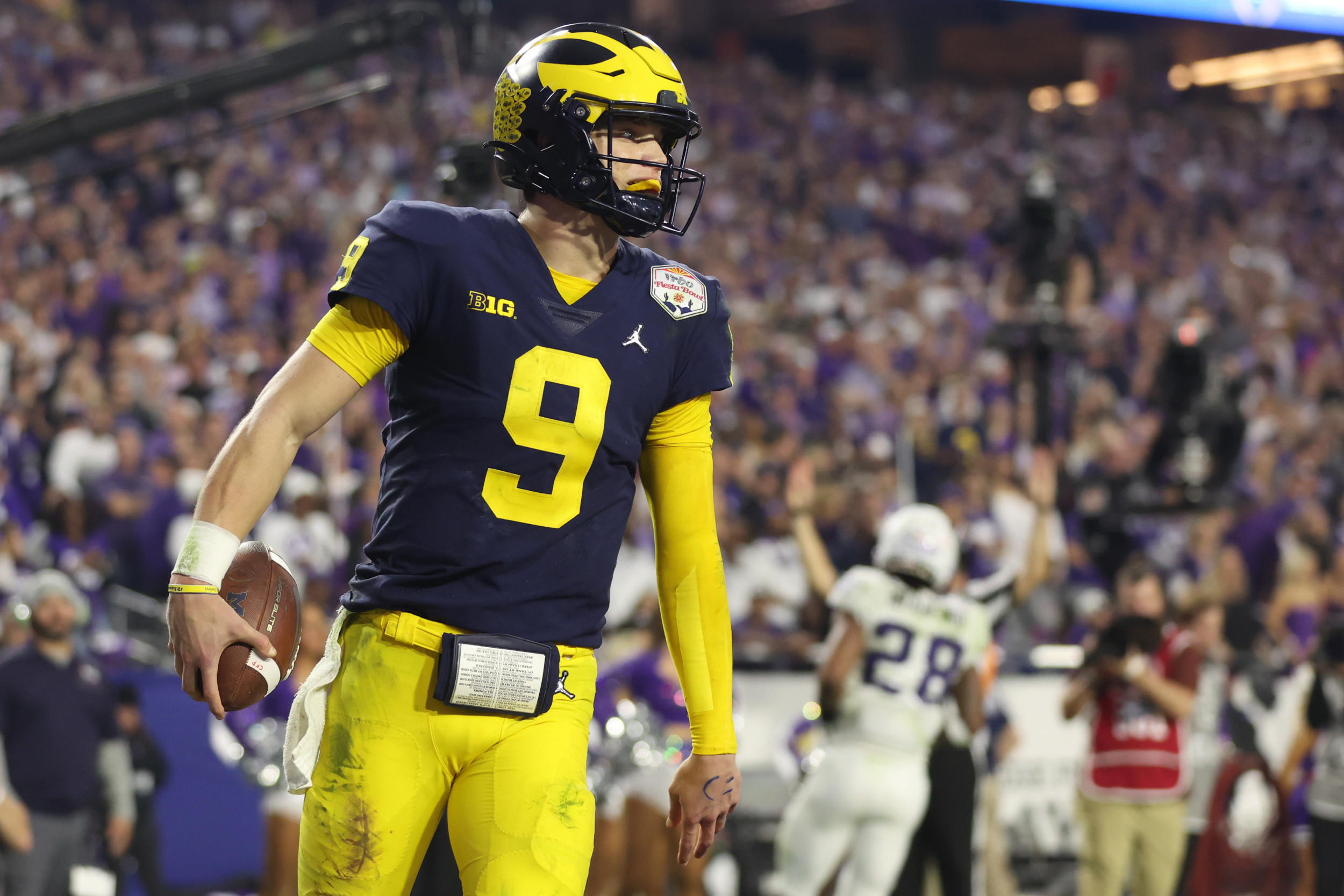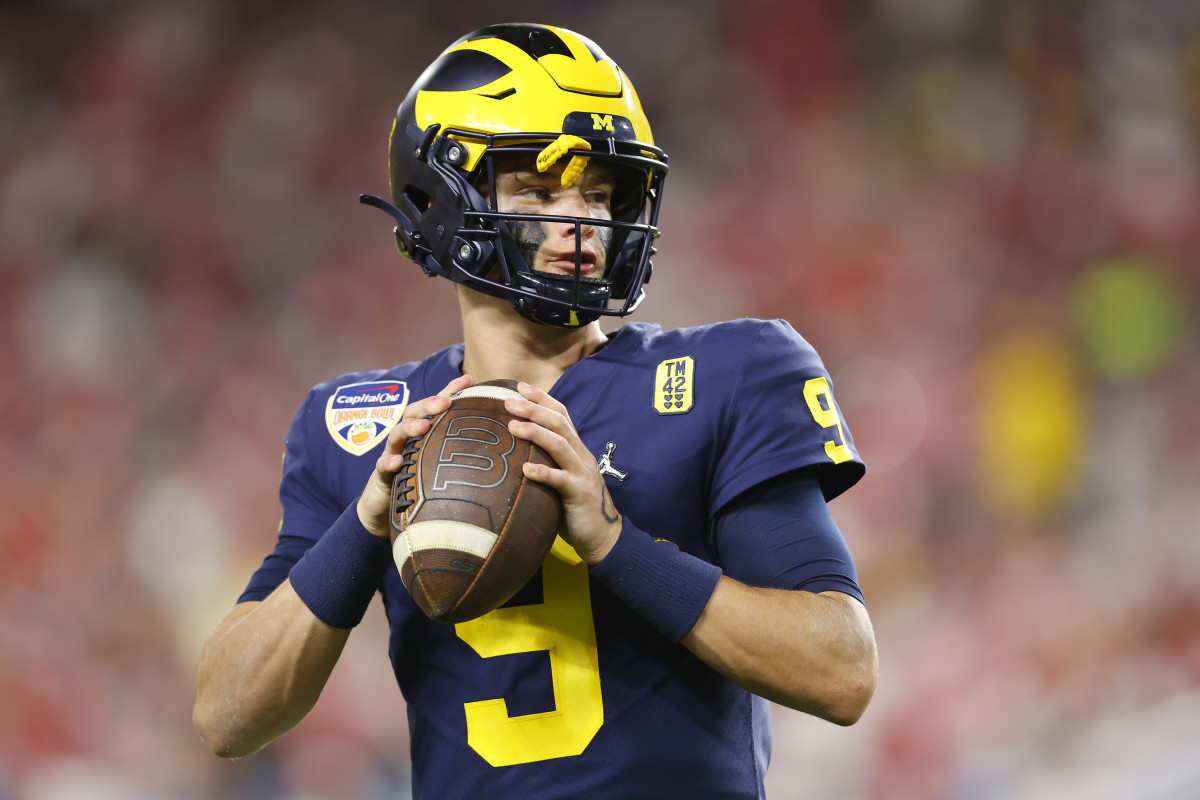JJ McCarthy’s Knee Injury

JJ McCarthy, the starting quarterback for the University of Michigan Wolverines, suffered a knee injury during the 2023 season. The injury occurred during a crucial game, raising concerns about his availability and the team’s future prospects.
The Incident and Initial Diagnosis
JJ McCarthy sustained the knee injury during the Wolverines’ game against the Penn State Nittany Lions on October 21, 2023. The injury occurred in the first quarter of the game when McCarthy was tackled by a Penn State defender. The impact of the tackle appeared to cause significant pain, and McCarthy was immediately taken out of the game.
Initial reports indicated that McCarthy had suffered a hyperextended knee, but the severity of the injury was unclear at the time. Subsequent examinations and imaging revealed that McCarthy had sustained a torn ACL (anterior cruciate ligament) and a meniscus tear. This diagnosis confirmed the seriousness of the injury and raised concerns about his availability for the remainder of the season.
Impact on JJ McCarthy and the Michigan Wolverines: Jj Mccarthy Knee Injury

JJ McCarthy’s knee injury is a significant setback for both the quarterback and the Michigan Wolverines. The severity of the injury and its potential impact on his performance and the team’s season are major concerns.
Potential Impact on JJ McCarthy’s Performance, Jj mccarthy knee injury
McCarthy’s injury could have a substantial impact on his performance, both in the short and long term. Knee injuries, especially those involving ligaments, can be complex and require extensive rehabilitation. The recovery process can be lengthy, and there is always a risk of lingering effects that may affect his mobility, throwing motion, and overall athleticism. It is essential for McCarthy to prioritize a thorough and complete recovery to ensure he returns to the field at his best.
Timeline for Recovery and Return to Play
The timeline for McCarthy’s recovery and return to play will depend on the severity of the injury and the individual’s response to treatment.
- A minor sprain or strain might allow for a return within a few weeks, while a more severe injury, such as a torn ACL, could require surgery and a recovery period of several months.
- In the case of a more significant injury, McCarthy might miss a significant portion of the season, impacting his development and potentially affecting the team’s performance.
Impact on the Michigan Wolverines’ Football Season
McCarthy’s absence will undoubtedly impact the Michigan Wolverines’ football season. He is a crucial player for the team, providing leadership, playmaking ability, and a dynamic offensive threat. His injury could create a void in the quarterback position, forcing the team to rely on backup options.
- The team’s offensive scheme might need to be adjusted to accommodate the strengths and weaknesses of the backup quarterback, potentially impacting the overall offensive flow and effectiveness.
- The Wolverines’ ability to compete at a high level will depend on how well the team adapts to McCarthy’s absence and how effectively the backup quarterback can perform.
Treatment and Rehabilitation Process

The treatment and rehabilitation process for JJ McCarthy’s knee injury will depend on the specific nature and severity of the injury. However, a typical plan would involve a combination of medical interventions, physical therapy, and gradual return-to-play protocols.
Treatment Plan
The initial treatment plan will focus on reducing pain and inflammation. This may include:
- Rest: Limiting activity to allow the injured area to heal.
- Ice: Applying ice to the injured area to reduce swelling.
- Compression: Using a bandage to compress the injured area and reduce swelling.
- Elevation: Keeping the injured leg elevated above the heart to reduce swelling.
- Pain medication: Over-the-counter or prescription pain medication to manage discomfort.
If the injury is severe, surgery may be required to repair the damaged ligaments or tendons.
Rehabilitation Process
Rehabilitation after a knee injury typically involves a structured program of physical therapy exercises designed to restore strength, flexibility, range of motion, and stability to the injured knee. This process can take several weeks or months, depending on the severity of the injury and the individual’s progress.
- Early Stage: This stage focuses on reducing pain and inflammation, improving range of motion, and restoring basic mobility. Exercises may include gentle range-of-motion exercises, isometric exercises (contracting muscles without movement), and light cardiovascular activity.
- Mid-Stage: As the knee heals, the focus shifts to strengthening the muscles surrounding the knee, improving balance and coordination, and gradually increasing activity levels. Exercises may include resistance training, plyometric exercises (explosive movements), and functional exercises that mimic movements required for sports.
- Late Stage: This stage involves a gradual return to sports-specific activities, including running, jumping, and cutting drills. The athlete will work closely with their physical therapist and coaches to ensure they are progressing safely and effectively.
Challenges and Milestones
The recovery process can be challenging, and there may be setbacks along the way. Some common challenges include:
- Pain and discomfort: Pain is a normal part of the healing process, but it can be frustrating and discouraging. It is important to listen to your body and rest when needed.
- Swelling: Swelling can persist for several weeks or months after an injury. Compression, elevation, and ice can help to manage swelling.
- Loss of strength and flexibility: It is common to experience a loss of strength and flexibility after a knee injury. Physical therapy exercises are essential to restore these functions.
- Fear of reinjury: It is natural to be afraid of reinjuring the knee. Working with a physical therapist and following a gradual return-to-play protocol can help to reduce the risk of reinjury.
Important milestones in the recovery process include:
- Full range of motion: Being able to move the knee through its full range of motion without pain or restriction.
- Full weight-bearing: Being able to bear full weight on the injured leg without pain or instability.
- Return to sports-specific activities: Gradually returning to sports-specific activities, such as running, jumping, and cutting drills.
- Return to competition: Being cleared by a medical professional to return to competition.
Jj mccarthy knee injury – JJ McCarthy’s knee injury has been a major concern for Michigan fans, as it could impact his performance on the field. The severity of the injury is still being evaluated, but it’s possible that he may require surgery. To learn more about the potential surgical procedures and recovery timeline, you can check out this article on jj mccarthy knee surgery.
While the details surrounding the injury are still unfolding, it’s clear that McCarthy’s knee will be a key factor in his future success.
JJ McCarthy’s knee injury has been a hot topic, and while the specifics haven’t been officially released, the possibility of a torn meniscus is being discussed. If it is indeed a torn meniscus, recovery time can vary depending on the severity of the tear.
You can find more information about the potential recovery timeline for a torn meniscus here. Hopefully, McCarthy’s injury isn’t too serious and he can return to the field quickly.
